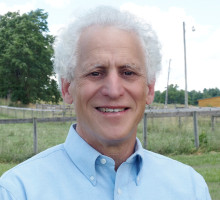
Johns Hopkins UniversityEst. 1876
America’s First Research University
Revising the Traditional Interpretation of Rural Electrification

Even after decades of retelling, the story of rural electrification in the United States remains dramatic. As textbooks and popular histories inform us, farmers obtained electric service only because a compassionate federal government established the Rural Electrification Administration (REA) in 1935, during the Great Depression. The agency ’s success in raising standards of living for millions of Americans, such that more than 80 percent of farms received electric power in 1950, contrasted with the failure of big-city utility companies, which served under 12 percent of farms just 15 years earlier. Traditional accounts, written by influential historians of the New Deal era, argued that greedy corporate managers showed little interest in the apparently unprofitable farmers, who endured unbearable hardships that easily could have been mitigated if only they had access to electricity.
Though emotionally stirring and widely accepted, this story of rural electrification is wrong--or, to say the least, severely exaggerated--a situation that my new book, Powering American Farms, seeks to redress. It reinterprets the history of rural electrification by demonstrating that private (investor-owned) utility companies actually did much to promote electrification in the dozen years before creation of the REA.
Without doubt, the rural market looked unappealing to utility company managers, who had spent much of the previous decades investing in infrastructure to serve urban manufacturing, transportation, commercial, and residential customers. Farmers did not seem attractive since their sparse distribution--on average only two or three potential customers per mile of wire (compared to up to one thousand per mile in cities)--meant higher costs to build and operate power lines. From a business standpoint, electrifying farmers made little sense, and few people expected corporations to provide service at a loss.
Only large consumption of electricity would overcome the financial barrier, and at first, farmers seemed most interested in using electricity just for illumination, which improved life immeasurably. Unfortunately, electricity consumption for lighting alone did not provide much income for utility companies, reinforcing the decision to avoid the farm market.
Despite this generally accepted view, a few rural electrification advocates emerged within the industry, arguing that under the right circumstances, farmers could make profitable customers. The key was to get ruralites to use a lot of electricity. Bowing to public relations pressures and a modest sense of social obligation, the main utility trade group established in 1923 the Committee on the Relation of Electricity to Agriculture (CREA), an umbrella organization that sought to find ways to make rural electrification profitable to both farmers and power companies. Working closely with agricultural engineers in state land-grant colleges, the industry explored scores of then-novel techniques to boost electrical consumption on farms. Highly touted examples included using electric lights in chicken houses, which raised egg production significantly, and electric heaters that increased the number of chicks and piglets that survived after birth to adulthood (and to market). Though farmers who employed such new technologies saw their electric bills grow markedly, they also watched their income appreciate even more, making ruralites and utility companies happy.
Research by CREA affiliates helped triple the number of farms receiving central-station electricity from 1923 to 1929, when the Great Depression began. Put differently, the average compounded growth rate of rural electrification in this period averaged about 22 percent annually--a staggering amount especially when considering that the farm sector still struggled to emerge from the deep 1920-1921 recession. (In 1923, 177,561 farms enjoyed electricity from power stations; that number jumped to 576,168 at the end of 1929.) These data contradict the claim that the industry did little to further farm electrification.
Traditional histories also suggest that the REA-financed cooperative membership organizations (known as “coops”) deserve almost exclusive credit for achieving the huge gains in rural electrification that occurred in the late 1930s and beyond. By 1950, more than 82 percent of farms had wires strung to them; in the following 8 years, the percentage rose to 98, signifying almost universal electrification. But the standard narratives do not account for the extensive effort made by private companies to electrify farms, such that in 1958, they supplied power to 43 percent of connected rural customers. (REA coops powered 51 percent, while other public entities, such as municipal utilities, supplied the remaining 6 percent.) To be sure, private companies accelerated their drive into rural territories soon after the federal government created the REA. Moreover, in many cases, they employed less-than-respectable (and legally questionable) techniques to undermine REA coops from gaining potentially lucrative customers. Nevertheless, the farm market in the late 1950s (and today) remains served by both public and private enterprises in a way that does not comport with the popular notion that the benevolent government triumphed over evil capitalists to electrify rural America.
Conventional histories also do not account for the large number of farmers--about 4 percent in the years before the REA’s creation--that obtained electricity from novel technologies (known as “isolated power plants”) to produce electricity for themselves. Some of these farmers exploited local wind and water resources, but many more employed gasoline- or kerosene burning internal combustion engines tied to generators to produce electricity, much of it stored in batteries. Though sometimes thought of as backward (since they did not yield as reliable energy as provided by wires connected to large power stations), such plants often generated sufficient amounts of electricity for farmers to enjoy modern conveniences while also reinforcing rural values of autonomy. This type of self-generation would also foreshadow a set of policy innovations a century later, especially in parts of the world where central station-provided power does not exist. (See news item Why Rural Electrification has Policy Resonance Today).




